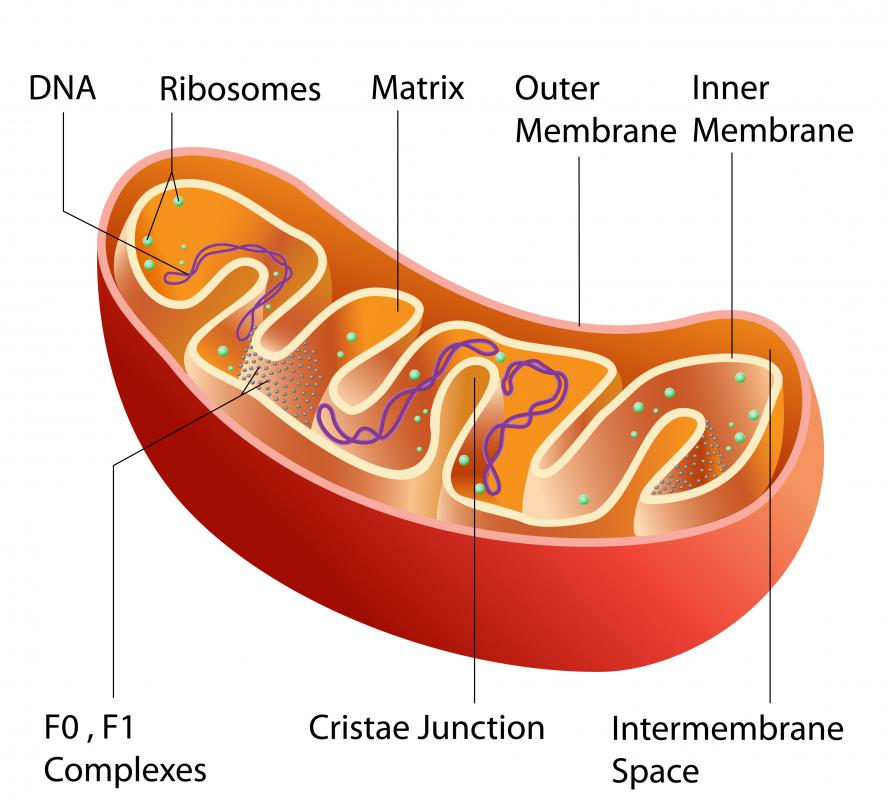At WiseGEEK, we're committed to delivering accurate, trustworthy information. Our expert-authored content is rigorously fact-checked and sourced from credible authorities. Discover how we uphold the highest standards in providing you with reliable knowledge.
What is Free Radical Damage?
When oxygen chemically reacts with other atoms, the interaction produces free radicals, which are atoms containing an unpaired electron in the outer shell. The unstable free radicals react quickly with other compounds, trying to steal an electron. When the molecule under attack loses its electron, it develops into a free radical itself, starting a chain reaction. The main threat from free radicals comes from the damage that they inflict on cellular deoxyribonucleic acid (DNA) or cell membranes. Free radical damage, which contributes to cancer, aging, and a number of diseases, can potentially be prevented with antioxidants, which as chemicals that easily donate electrons to free radicals.
Mitochondria are small cellular organelles that generate useful chemical energy for cells by moving electrons between molecules. Oxygen occupies the final position in the electron transport chain, and a faulty interaction between an electron and oxygen generates the radical form of oxygen, the most common free radical in living systems. The primary mechanism of radical oxygen damage in the cell is mutation of the cellular DNA. While repair mechanisms in the cell can mend nuclear DNA, the mitochondrial DNA (mtDNA) cannot be readily restored. Accumulative mtDNA damage builds up over time, resulting in extensive mitochondrial dysfunction, waning cell energy supplies and ultimate cell death.

Changes to source molecules by sunlight creates other free radicals. In the lower atmosphere, the most notable examples are the light-induced dissociation of nitrogen dioxide, yielding oxygen and nitric oxide, a key ingredient in smog, and the photodissociation of ozone to form an excited oxygen atom. An important source of radicals is the dissociation of chlorofluorocarbons by either ultraviolet radiation, or reactions with other stratospheric constituents. These free radicals destroy the ozone layer.

Free radical damage to DNA leads to mutations that cause malignancy. Atherosclerosis, alcohol-related liver damage, and emphysema from cigarette smoking are all attributed to free-radical induced oxidation of many of the body chemicals. Free radicals may cause schizophrenia, Alzheimer’s disease, Parkinson’s disease, and deafness. Another example of free radical damage is the skin damage that occurs with excessive sun exposure. The “free radical theory of aging” proposes that free radicals trigger the aging process itself.

Oxidation is the process of free radical damage caused by radical oxygen. Antioxidants are molecules that can safely donate electrons to free radicals, terminating the oxidative chain reaction before critical molecules are damaged. Although several enzyme systems in the body scavenge free radicals, the main vitamin or mineral antioxidants include vitamin A or beta-carotene, vitamin E, vitamin C, and selenium, which is a trace metal. The body does not make these nutrients so they must be obtained as part of a well-balanced diet.
AS FEATURED ON:
AS FEATURED ON:















Discuss this Article
Post your comments